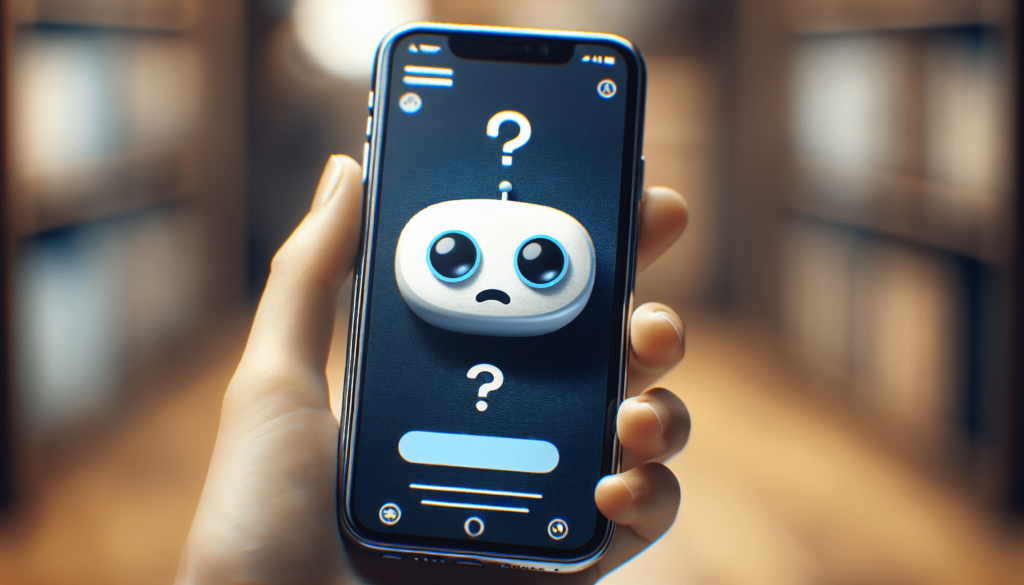Welcome to a guide on troubleshooting chatbot issues in your home service business. Whether you’re struggling with slow response times, inaccurate information, or poor user experience, this article will provide you with practical tips and solutions to improve the performance of your chatbot. By addressing these common issues effectively, you can enhance customer satisfaction, streamline communication, and ultimately boost the success of your business. Let’s dive in and solve those chatbot problems together!
Troubleshooting Chatbot Issues in Your Home Service Business
Hey there! Are you running a home service business and finding that your chatbot isn’t quite working as expected? Don’t worry, we’ve got you covered. In this article, we’ll walk you through some common chatbot issues and how you can troubleshoot them to ensure smooth customer interactions and increased efficiency.

Understanding the Importance of a Chatbot in Your Home Service Business
Before we dive into the troubleshooting process, let’s take a moment to understand why having a chatbot is essential for your home service business. A chatbot can provide 24/7 support to your customers, offer quick responses to frequently asked questions, and help streamline your operations. By leveraging automation through a chatbot, you can enhance customer satisfaction and free up your team to focus on more complex tasks.
Common Chatbot Issues and How to Fix Them
Now, let’s address some common chatbot issues that you might encounter in your home service business and explore how you can troubleshoot them effectively.
Issue 1: Limited or Inaccurate Information Provided by the Chatbot
If your chatbot is providing limited or inaccurate information to customers, it can lead to frustration and confusion. To resolve this issue, ensure that your chatbot has access to updated and relevant information about your services, pricing, availability, and FAQs. Regularly review and update the chatbot’s database to ensure that it stays current.
Issue 2: Slow Response Time from the Chatbot
A slow response time from the chatbot can result in impatient customers abandoning the conversation or seeking alternative support channels. To address this issue, optimize the chatbot’s workflows and responses to provide timely and relevant answers. Consider implementing pre-set responses for common queries and integrating AI algorithms to improve response time based on user input.
Issue 3: Lack of Personalization in Chatbot Interactions
Customers appreciate personalized interactions, even when engaging with a chatbot. If your chatbot lacks personalization and feels robotic, customers may disengage from the conversation. To add a personal touch to your chatbot interactions, customize the chatbot’s responses based on user input, history, and preferences. Incorporate the customer’s name, past interactions, and personalized recommendations to create a more engaging experience.
Issue 4: Difficulty in Navigating the Chatbot Menu
A complex or confusing chatbot menu can deter customers from using the chatbot to seek assistance. Simplify the chatbot menu by organizing it into clear categories, providing simple navigation options, and implementing search functionalities. Ensure that customers can easily find the information they need through intuitive menu structures and guided prompts.
Issue 5: Integration Challenges with Other Systems and Platforms
If your chatbot is not properly integrated with your CRM, website, or other systems, it can result in disjointed customer experiences and inefficient communication. To overcome integration challenges, work closely with your IT team or chatbot provider to ensure seamless integration with existing systems. Test the chatbot’s functionality across different platforms to identify and resolve any compatibility issues.
Issue 6: Inadequate Training and Monitoring of the Chatbot
Without proper training and monitoring, your chatbot may not perform optimally and could lead to costly errors. Invest in comprehensive training for your chatbot operators to ensure that they understand the chatbot’s functionalities, responses, and limitations. Implement regular monitoring and performance evaluations to track the chatbot’s effectiveness, identify areas for improvement, and address any issues promptly.

Best Practices for Maintaining an Effective Chatbot in Your Home Service Business
In addition to troubleshooting common chatbot issues, it’s essential to follow best practices to maintain an effective chatbot in your home service business. Here are some tips to keep in mind:
Regularly Update Your Chatbot’s Knowledge Base
To ensure that your chatbot provides accurate and up-to-date information to customers, regularly update its knowledge base with the latest service offerings, pricing details, FAQs, and troubleshooting guides. Conduct periodic reviews of the chatbot’s content and refine its responses based on customer feedback and evolving business needs.
Implement Multi-Channel Support for Seamless Customer Interactions
Incorporate multi-channel support capabilities in your chatbot to enable seamless communication with customers across various platforms, such as website chat widgets, social media messengers, and SMS. By offering multiple touchpoints for customer interactions, you can enhance customer engagement, accessibility, and satisfaction.
Use Data Analytics to Optimize Chatbot Performance
Utilize data analytics tools to track and analyze the chatbot’s performance metrics, user interactions, and customer feedback. Leverage insights from data analytics to identify trends, assess user engagement, and optimize the chatbot’s workflows for improved efficiency and effectiveness. Adjust your chatbot strategies based on data-driven decisions to maximize its impact on your home service business.
Provide Ongoing Training and Support for Chatbot Operators
Invest in continuous training and support for your chatbot operators to enhance their skills, knowledge, and performance. Equip your team with the necessary resources, guidelines, and tools to effectively manage and troubleshoot chatbot issues in real-time. Foster a culture of learning and development within your team to ensure that they stay informed about the latest chatbot technologies and best practices.

Final Thoughts
Navigating chatbot issues in your home service business can be challenging, but with the right strategies and solutions, you can overcome them effectively. By understanding the importance of a chatbot, addressing common issues, following best practices, and providing ongoing training and support, you can maintain an efficient and user-friendly chatbot that enhances customer experiences and drives business growth.
Remember, your chatbot is a valuable asset that can help you streamline operations, improve customer satisfaction, and differentiate your home service business from competitors. By investing time and effort in troubleshooting chatbot issues and optimizing its performance, you can unlock the full potential of your chatbot and achieve long-term success in the competitive home service industry.
We hope this article has been helpful in guiding you through the process of troubleshooting chatbot issues in your home service business. If you have any questions or need further assistance, feel free to reach out to us. Happy troubleshooting and chatbot optimizing!

